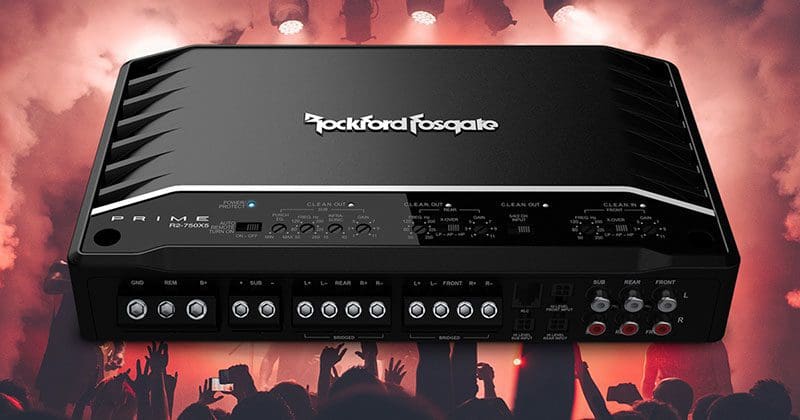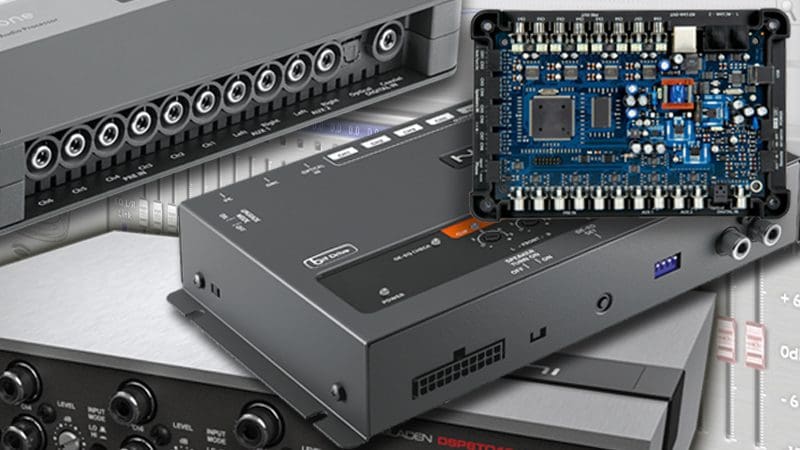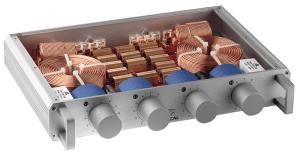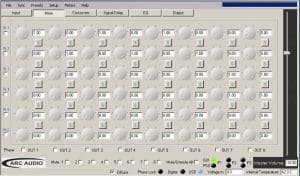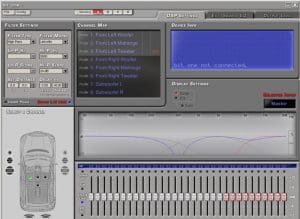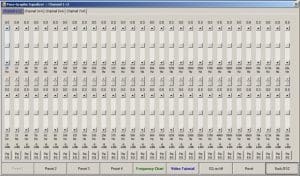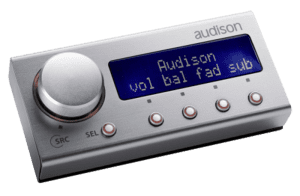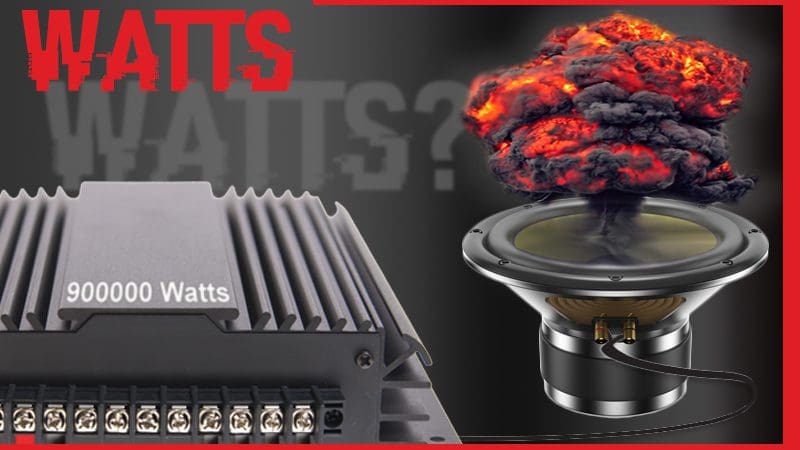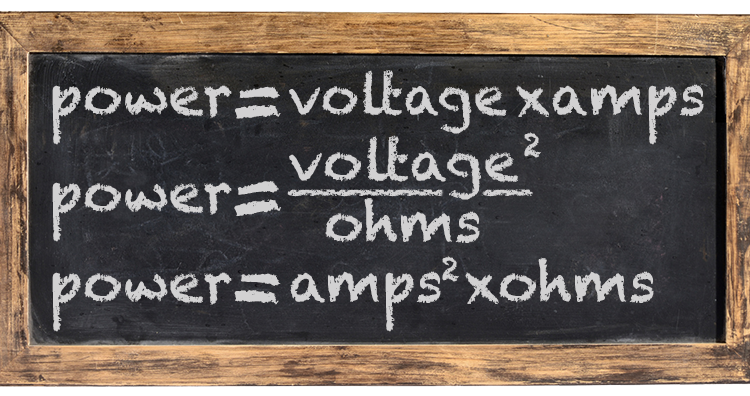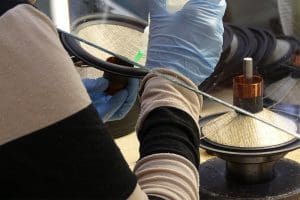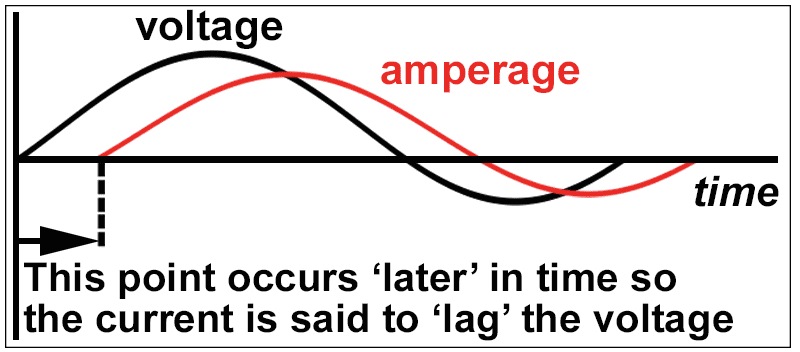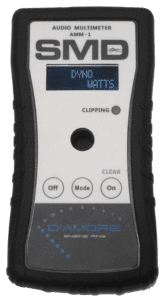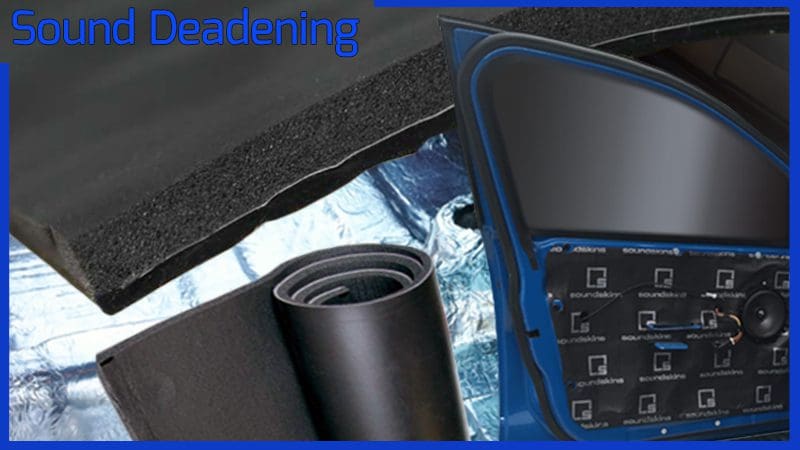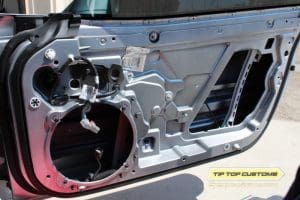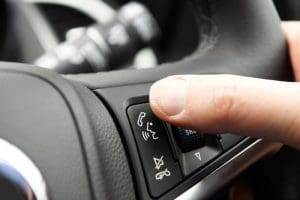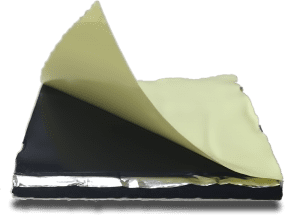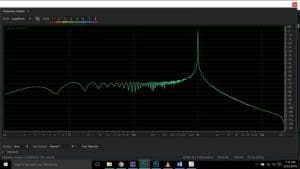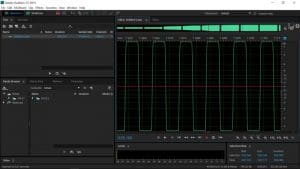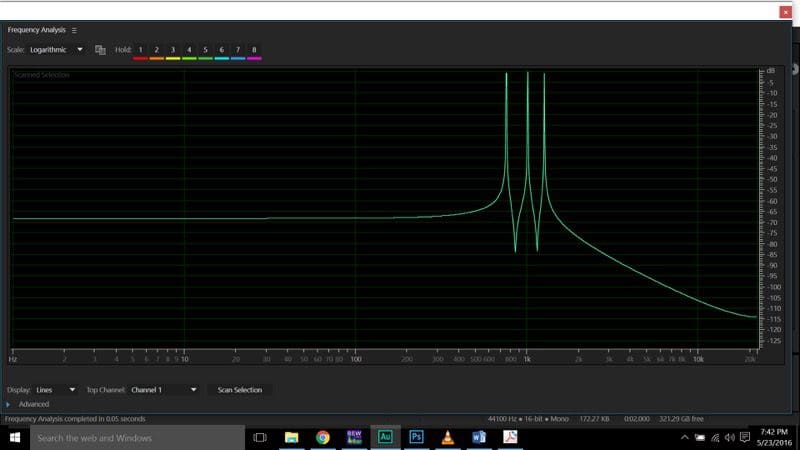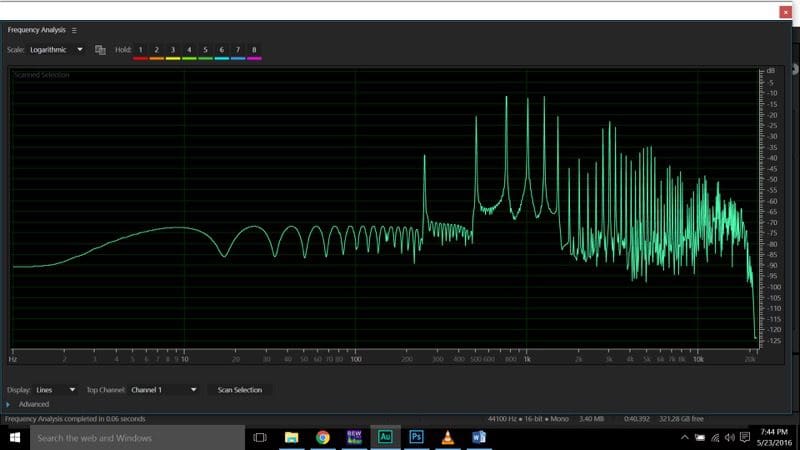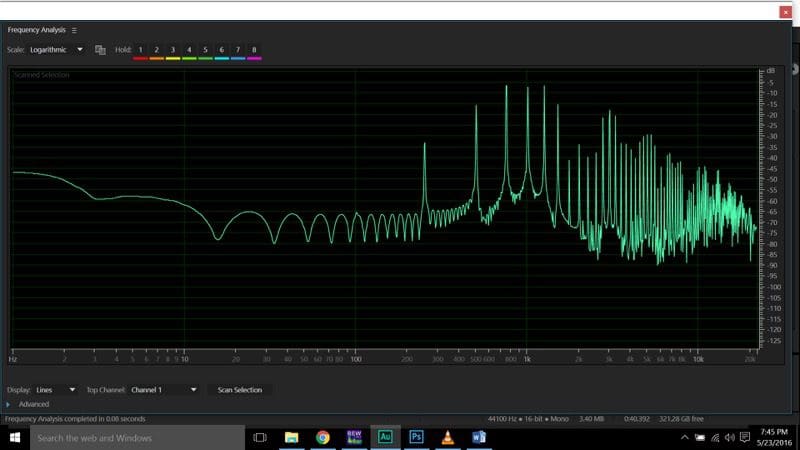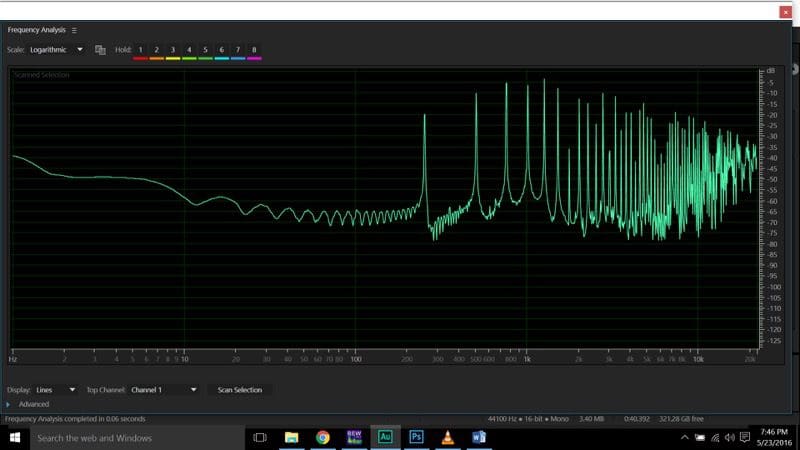In the spring of 2020, Rockford Fosgate launched the latest generation of its Prime Series amplifiers. While the focus of this spotlight is on the full-range Class-D five-channel R2-750X5, it’s worth noting the R2 series also includes a two-channel, two four-channel and four monoblock models. Equipped with features and technologies that have trickled down from the Punch and Power series, these compact yet powerful amplifiers are ready to bring your music to life.
The Basics – Features and Ratings
Rockford leads the car audio industry with power specifications you can trust. The four main channels are rated to produce 50 watts of power into 4-ohm loads and 100 watts into 2 ohms. The front channels can be bridged to provide 200 watts into a pair of 4-ohm speakers. The subwoofer channel is rated for 200 watts at 4 ohms and 350 watts at 2 ohms. In total, that’s 750 watts – just like it says in the model number. Signal-to-noise specifications are -80 dB for the main channels and -75 dB for rear, and just like the power ratings, these numbers are fully compliant with the CTA-2006 testing standard.
If you look at Rockford’s website, you’ll see another set of power ratings. Tested using their internal RATS (Rockford Automated Testing System) and verified by the Audio Graph PowerCube, these elevated numbers represent the real-world power production capabilities of the amp when playing music that’s dynamic instead of single-frequency test tones. The Dynamic Power numbers are 70 watts by four and 241 watts for the subwoofer at 4 ohms, and 114 watts by four and 426 watts by one at 2 ohms.

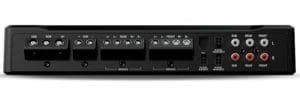 All of the electrical and signal connections are found on the front edge of the amp. Angled terminal blocks for four-AWG power and ground cables are next to the five eight-AWG speaker output connection blocks. The amp includes six RCA input jacks that will accept up to 4 volts of signal. Beside them are three jacks for the included speaker-level input pigtails. All of the inputs use balanced differential circuitry to help prevent noise from getting into the audio system. The high-level inputs will accept up to 12 volts, and an accompanying switch labeled Auto Remote Turn On will bring the amp to life when it detects that your factory radio has powered on. A three-position input selection switch allows the amp to feed all five channels from four or just two of the inputs to eliminate the need for Y-cables.
All of the electrical and signal connections are found on the front edge of the amp. Angled terminal blocks for four-AWG power and ground cables are next to the five eight-AWG speaker output connection blocks. The amp includes six RCA input jacks that will accept up to 4 volts of signal. Beside them are three jacks for the included speaker-level input pigtails. All of the inputs use balanced differential circuitry to help prevent noise from getting into the audio system. The high-level inputs will accept up to 12 volts, and an accompanying switch labeled Auto Remote Turn On will bring the amp to life when it detects that your factory radio has powered on. A three-position input selection switch allows the amp to feed all five channels from four or just two of the inputs to eliminate the need for Y-cables.
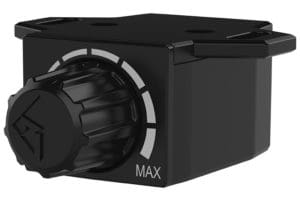 The controls have been placed along the top to make it easy for your installation technician to configure the amplifier. The front and rear channel pairs have dedicated sensitivity adjustments and crossover function and frequency controls. The filtering can be set to high- or low-pass modes, or bypassed. The crossovers are adjustable from 50 to 250 Hz and have a -12 dB/octave Butterworth response curve. The subwoofer channel shares the same low-pass filter frequency adjustment range as the main channels and adds an infrasonic filter that’s adjustable from 15 to 40 Hz. The last control is the Punch EQ adjustment that your installer can use to add up to 18 dB of boost at 45 Hz to the subwoofer channel. Rockford includes a remote level control so that you can adjust the subwoofer level from the front seat.
The controls have been placed along the top to make it easy for your installation technician to configure the amplifier. The front and rear channel pairs have dedicated sensitivity adjustments and crossover function and frequency controls. The filtering can be set to high- or low-pass modes, or bypassed. The crossovers are adjustable from 50 to 250 Hz and have a -12 dB/octave Butterworth response curve. The subwoofer channel shares the same low-pass filter frequency adjustment range as the main channels and adds an infrasonic filter that’s adjustable from 15 to 40 Hz. The last control is the Punch EQ adjustment that your installer can use to add up to 18 dB of boost at 45 Hz to the subwoofer channel. Rockford includes a remote level control so that you can adjust the subwoofer level from the front seat.
Rockford Technology Improves Performance
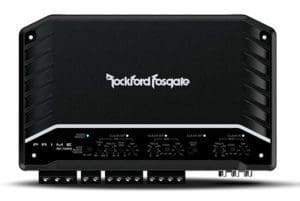 If you’ve been a fan of Rockford products for a while, then acronyms like MEHSA, P.O.W.E.R., C.L.E.A.N. and NOMAD should be nothing new to you. What is new is finding all of these features on a Prime Series amp.
If you’ve been a fan of Rockford products for a while, then acronyms like MEHSA, P.O.W.E.R., C.L.E.A.N. and NOMAD should be nothing new to you. What is new is finding all of these features on a Prime Series amp.
The amp is based on a 1.9- by 6.8- by 11.2-inch cast aluminum heatsink that wicks heat away from the switching devices quickly and efficiently. Rockford calls this design MEHSA 4, which stands for Maximum Efficiency Heat Sink Application version 4. What this means to users is that the amp will keep making its rated power hour after hour, even with the volume cranked. Sure, the heatsink will get hot – but that’s its job. MOSFETS don’t like being hot. In fact, their maximum current capacity drops quickly as they heat up. A thermal design like MEHSA 4 extracts heat from the output devices to reduce distortion, improve efficiency and extend the life of the amplifier.
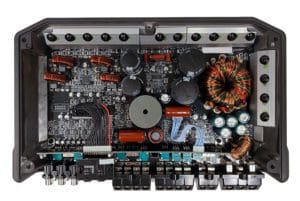 The R2-750X5 includes a power supply design called P.O.W.E.R. This lightly regulated configuration increases maximum power output capability as the charging system supply voltage increases. Speaking of which, this amp is designed to work with supply voltages from 9 to 16 volts.
The R2-750X5 includes a power supply design called P.O.W.E.R. This lightly regulated configuration increases maximum power output capability as the charging system supply voltage increases. Speaking of which, this amp is designed to work with supply voltages from 9 to 16 volts.
In terms of protection, Rockford’s NOMAD (NOn-Multiplying Advanced Decision) circuitry monitors the amp and will mute the outputs if it detects a short circuit on a speaker connection or an over-temperature condition on the chassis.
Perhaps the coolest technical feature in the R2-750X5 is the C.L.E.A.N. (Calibrated Level Eliminates Audible Noise) circuit. C.L.E.A.N. monitors the input and output connections for distortion. On the input side, the circuit monitors the signal from your radio for distortion so your installer can identify the maximum usable volume setting. On the output side, the monitoring LEDs turn red when the amp starts to clip the output signal.
Upgrade Your Car Audio System with Rockford Fosgate
If you are shopping for a high-performance multichannel amplifier to upgrade your car audio system, visit your local authorized Rockford Fosgate dealer and ask about the Prime Series R2-750X5. You can find a shop near you using the Dealer Locator on the Rockford website. For more information about Rockford products, be sure to follow them on Facebook, Twitter, Instagram or their YouTube Channel.
This article is written and produced by the team at www.BestCarAudio.com. Reproduction or use of any kind is prohibited without the express written permission of 1sixty8 media.
This article is written and produced by the team at www.BestCarAudio.com. Reproduction or use of any kind is prohibited without the express written permission of 1sixty8 media.
